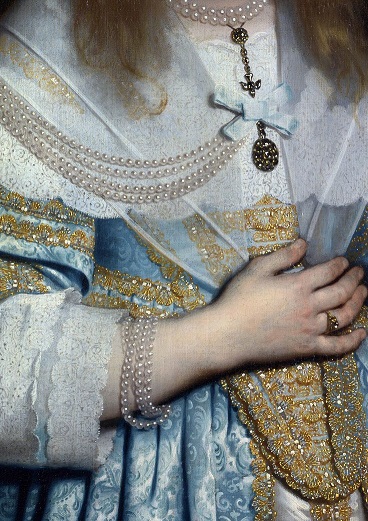Fashion: Theories, Materials and Images 1540-1940
Overview
Fashion as a cultural phenomenon with its rapid cycles of vestimentary changes creates an elastic, man-made concept of an eternal now time instead of a divinely appointed time. Scholars regard the inception of fashion to have taken place in the later part of the fourteenth-century in Europe’s and Asia’s prominent urban centres. Clothes are as central to human experience as food. They not only protect our bodies from the elements, but also constitute our sense of self. They can project our financial resources and can register our aesthetic tastes or our abstention from these choices. They can signal our affiliation to certain groups, localities and sexual identity, yet also our striving to be recognized as distinctive. Clothes indeed are a highly personal legacy of our own biographies and thereby give access to memory. Not surprisingly, scholars regard wardrobes as “‘psychic landscapes’ and storehouses of fantasies and anxieties, as well as accommodations to expectations of what a person ought to look and be like” (Ulinka Rublack). Yet, these experiments of self are a process of negotiation which is concurrently enabled and limited by larger socio-economic processes. These determine two key factors: our budget and what is for sale in the shops.
Fashion studies and dress histories constitute buoyant areas of academic research across disciplines such as history, art history, literature studies, sociology, and anthropology. Indeed, a considerable number of Europe’s most eminent thinkers engaged with fashion as a cultural form such as Friedrich Nietzsche, Georg Simmel, Walter Benjamin, Theodore W. Adorno, Roland Barthes and Pierre Bourdieu. With visual source material such as painting, sculpture and photography at the heart of its discipline, art history is a core discipline for the study of past and present fashion cultures as art historian Anne Hollander states: “Clothes make, not the man but the image of man-and they make it in a steady, reciprocal accord with the way artists make, not lifeless effigies but vital representations.” This module is organized around a range of key conceptual approaches to the study of fashion in the humanities through the lens of eight selected case studies which will anchor the larger theoretical issues in the close study of visual source material such as visual representations and surviving artifacts of clothing. The wide time frame will not only be of interest to students with different specializations, but will also enable a cross-referential and cross-media investigation of cultural concepts and practices across different historical clothing communities ranging from the sixteenth-century Low Countries and Spain to the so-called “Art Deco” era of the 1920s and 1930s.
Image: Bartholomeus van der Helst, Portrait of Girl, detail, 1645
Aims
By the end of the module, you should have acquired:
- a sophisticated understanding of the interdisciplinary exchange between humanities disciplines with regard to fashion and clothing as a research area
- an in-depth conversance with key approaches and methodologies in the study of fashion in art history and related disciplines
- advanced knowledge of cultural practices relating to the making, marketing, wearing and representation of clothing in specific communities
- a heightened ability to analyse the medium-specific issues of representing dress and textiles and visual material which transcends the pictorial
Preliminary reading
- Christopher Breward, Christopher, The culture of fashion (Manchester, 1995)
- Sarah-Grace Heller, ‘The birth of fashion,’ in G. Riello and Peter McNeil, The Fashion History Reader. Global Perspectives (Manchester, 2010), 25-39 and general introduction to this book.
- Lars Svendsen, Fashion: A Philosophy (London, 2006). Available as e-book, but also worthwhile purchasing.
- Susan Vincent, The Anatomy of Fashion: Dressing the Body from the Renaissance to Today (Oxford, 2009).
- Anne Hollander, ‘Accounting for Fashion’, in Anne Hollander, Feeding the Eye: Essays (Berkeley: University of California Press, 1999)

Module information
- Module title
Fashion: Theories, Materials and Images 1540-1940- Module number
HOA00077M- Convenor
Cordula van Wyhe
For postgraduates
